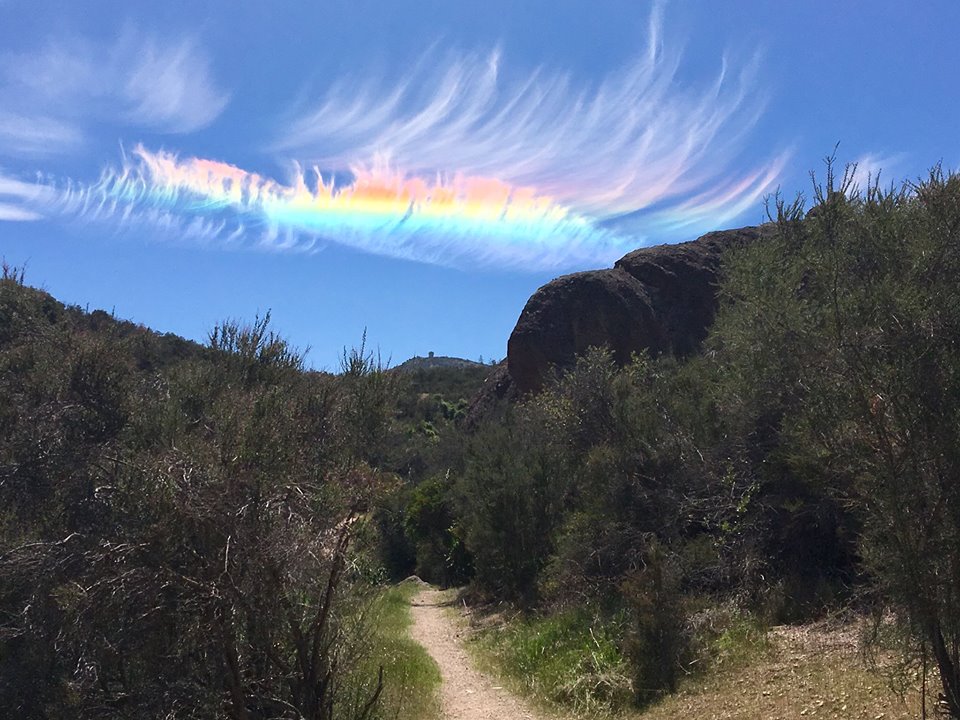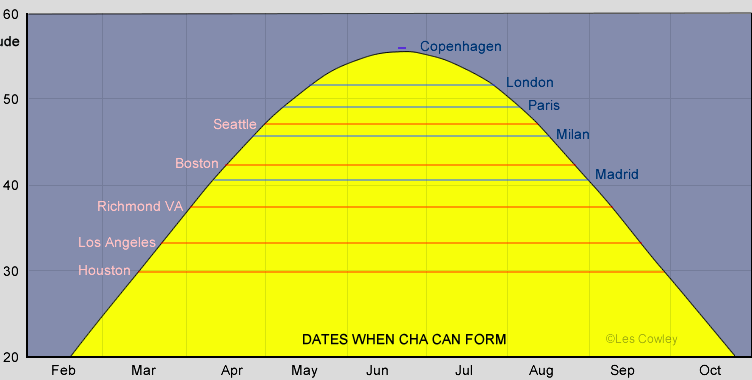
Last week, a runner traversing the trails of California’s Pinnacle National Park encountered a mesmerizing sight — a halo of rainbow colors emanating from the single cloud in the clear blue skies. While the phenomenon is commonly referred to as a “fire rainbow,” researchers say the name is misleading since the optical illusion is neither a rainbow, nor does it have anything to do with fire!

Instead, the stunning halos are circumhorizon, or circumhorizontal, arcs, which only occur in the summer. They require two conditions — the sun has to be situated 58 degrees or higher in the sky, and there has to be the presence of cirrus clouds. The thin, wispy clouds, which can be found at high altitudes, exist in a low-temperature environment and are therefore filled with ice crystals. As the sun’s light passes through them, the ice particles act like prisms, creating the colorful illusion.

Since the sun has to be higher than 58 degrees in the sky for the natural phenomenon to occur, the likelihood of encountering one depends on where you reside. The further away a country is from the equator, the less amount of time the sun remains at the high altitude. Also, the frequency of the sunny days has to coincide with the presence of cirrus clouds. As a result, “fire rainbows” are relatively common in North American cities like Houston and Los Angeles, where they are spotted at least four to five times during summer. However, while they are occasionally seen in European cities such as London and Paris, circumhorizontal arcs do not occur in areas north of Copenhagen.
Resources: atoptics.co.uk, iflscience.com, sfgate.com
